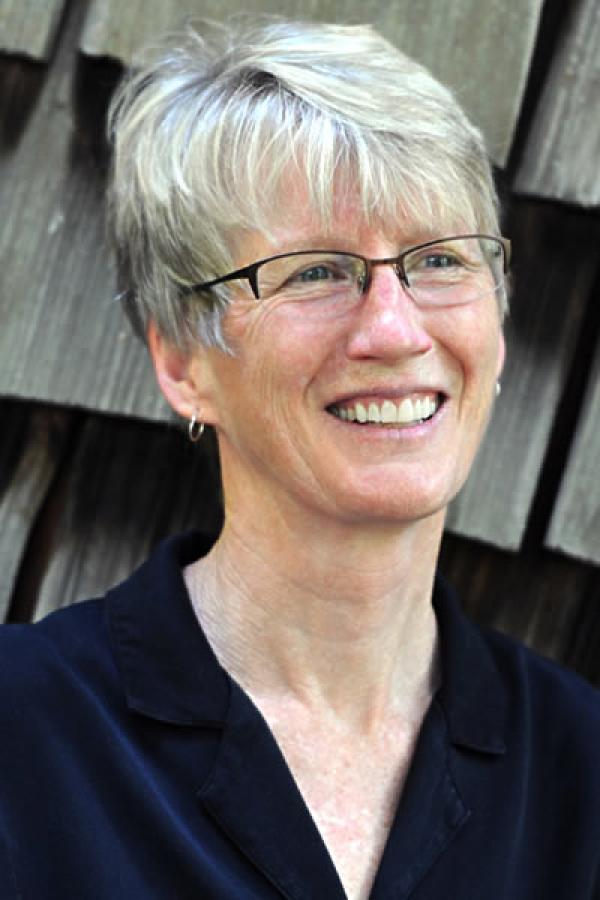Catherine Reid

Photo by Erin Brethauer
Bio
Catherine Reid directs the Creative Writing Program for undergraduates at Warren Wilson College, where she teaches courses in creative nonfiction and environmental writing; in 2009, she received the Teaching Excellence Award. In addition to two works of nonfiction, Falling into Place and Coyote, she has published essays in such journals as the Georgia Review, Fourth Genre, Bellevue Literary Review, and Massachusetts Review; she also edited two anthologies with the poet Holly Iglesias: Every Woman I’ve Ever Loved and His Hands, His Tools, His Sex, His Dress. She received a sabbatical fellowship from the Appalachian College Association for 2012-13, as well as creative writing fellowships at the American Antiquarian Society in Worcester, Massachusetts, and the Virginia Center for the Creative Arts. In 2013, she received a fellowship from the North Carolina Arts Council. She divides her time between Asheville, North Carolina, and western Massachusetts.
Author's Statement
The joys and stakes of this award are many: I have spent years crafting a kind of essay that interweaves a love of the natural world, a fascination with the ways we’re shaped by place, and a keen desire to better understand how such interactions affect human behaviors, and my most valued audience—a jury of my peers—has just given the work a hearty thumbs-up. It’s staggering and deeply affirming. (The only other gift that comes close to such an award is when readers tell me that, after reading my work, they’ll never travel through the world in quite the same way again.) The NEA fellowship also ups the ante for future work: Having been so endorsed, I yearn to do more and welcome the chance, which such generous support allows, to take a break from the academic pace and engage fully with new ideas and all that ripple from them. May I live up to the talent the judges believe is there!
Excerpt from "After a Sweet Singing Fall Down"
Blowing out eggs is a delicate affair, which I know from handling those of chickens, during the summer we cured a flock of eating each others’. We blew out the contents—a pinprick in each end, a tight seal with the mouth—then squirted in hot sauce and waxed over the holes, before returning the eggs to their nests to watch the hens fall for the trick.
The stakes are, of course, higher with the shells of wild songbirds. The collector, in this case my great-grandfather, first had to know which week a certain migrant returned in the spring, and where it took up residence, and how fast was its habit of nest building and egg laying. He had to know the fields and woods the way some people know scripture: phoebe in the alders, snow geese overhead; “Yea, the stork in the heaven knoweth her appointed times”—Jeremiah 8:7. And he had to do it all during the busiest time in a farmer’s year.
He must have collected hundreds, for surely some were too old and already contained embryos; or they broke in his coat pocket as he scaled a fence or crawled through scrub; or he pressed his lips to the egg and his pinch was too hard, his breath too strong, and the fragile shell gave way beneath his working man’s grip.
But dozens survived, from warblers and thrushes and sparrows and finches, and these he carefully labeled and nested in excelsior, the boxes packed as though readied for shipment to a museum. He didn’t record the narratives—the swale where a rare bird’s nest was found, the tree he had to climb, the angry parent he had to duck; those stories died with him, and then the eggs were just eggs, and years later my grandmother, the logical inheritor, quietly and efficiently destroyed them.
She never said whether or not it was a hard thing to do; she may simply have become aware that it was illegal to hunt or own migratory birds or to keep any part of them in personal collections. Or she may have found it a burden—having married by then and had two children of her own—in a world where nostalgia or sorrow had no role. Still, I wonder what passed through her mind as she obliterated the hollow eggs. Was it like the letting go I have had to do in the months since she died, of old notes and letters and slips of papers she kept, listing birds she had seen on certain summer days? Was it a last goodbye to the private conversations she and her father had shared—and that soon she and I would share—talks coded in bird names and habits and habitats?
Or had they simply become dusty, fifty-year-old eggs that ceased to suggest journeys or the potential for wild, vibrant lives?
(Excerpt from Falling Into Place: An Intimate Geography of Home, Beacon Press, 2014)

